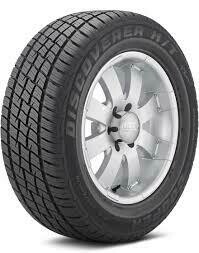CHOOSING THE RIGHT TIRE
The safety, pleasure and comfort of driving for years to come for thousands of kilometers will be determined in this choice. It is important to keep several factors in mind before making this decision. To get additional details, view here: cooper adventurer h/t review
Car design
First, it is important to understand how the manufacturer's engineering determines the tire that will be used as original equipment. I will use an average general-purpose car as an example, because for sports cars, SUV sand off-road vehicles the criteria may vary due to their more specific use.
The tire dimensions are defined at the beginning of the project, as they are decisive for choosing the exchange and differential ratios. In this phase, the dynamic turning diameter is used as a basis for comparison.
The size and weight of the vehicle are other factors when choosing the tire load index. The diameter of the brake disc will be the next limiting factor. A car is hardly seen where there is a large space between the brake caliper and the wheel. This shows that the smallest rim was chosen for that brake size.
On the one hand, the current needs for fuel consumption and gas emissions lead engineers to use the smallest possible tire, which means less weight and rotary inertia. The designers would like to use the largest sets of wheels and tires.
Regarding the width of the tire, several studies are carried out to identify which is the largest tire that will fit inside the front and rear fenders, without causing interference with the body. In most cases the tire + chain combination is considered, since in countries where snow is present, the use of chain is mandatory. This is why we sometimes notice that some cars could have adopted the wider tire (eg 225 instead of 215).
Through computers with high processing capacity with specific 3D software it is possible to visualize potential points of contact between tire with bodywork. The deformations of the bushings of the suspension control arms also enter this computer simulation, as well as the tire deformation itself. That way, you get the ideal tire size for a given project.This entire study is later proven in physical tests with the prototype vehicles.
When understanding these factors, we already noticed that we have little space to change the original dimension of the tire assembled by the manufacturer. There is an opening given by the manufacturer itself when offering a similar version with a slightly wider tire on a larger rim, but with a similar dynamic radius. In this way, differences in speedometer indication or data from the on-board computer are avoided and without losing the performance characteristics of the engine-gear unit.
